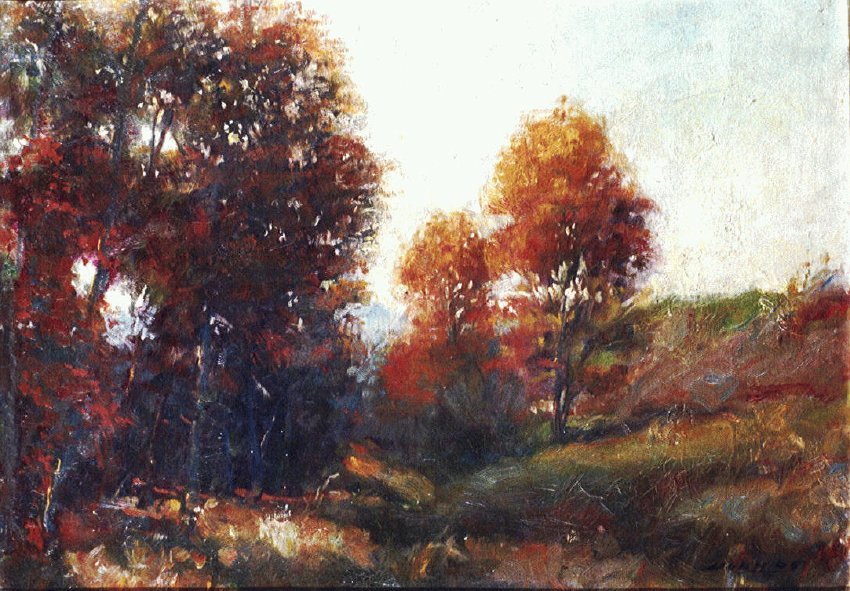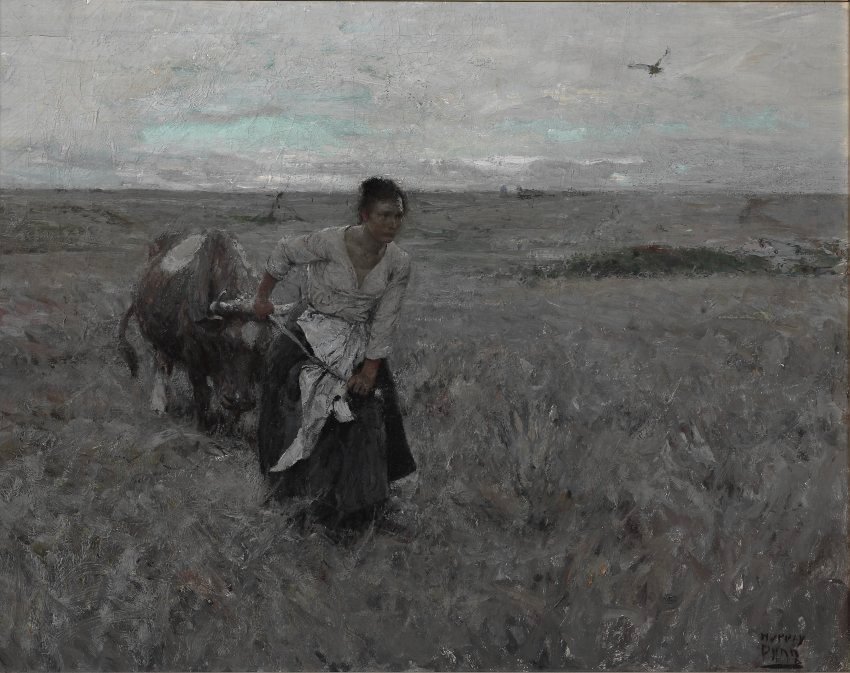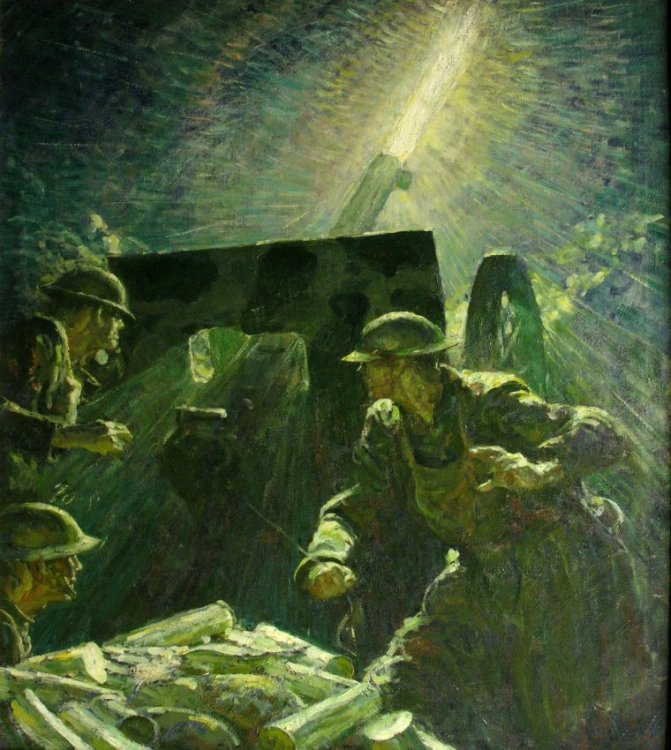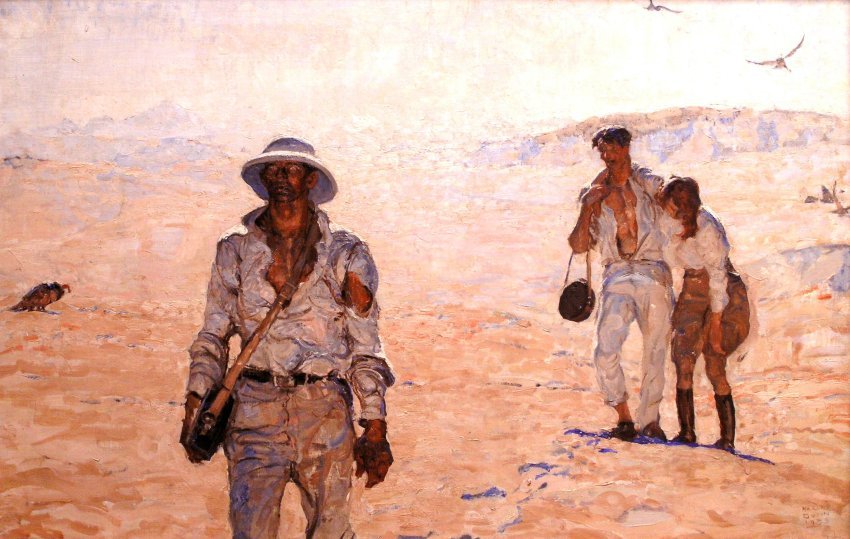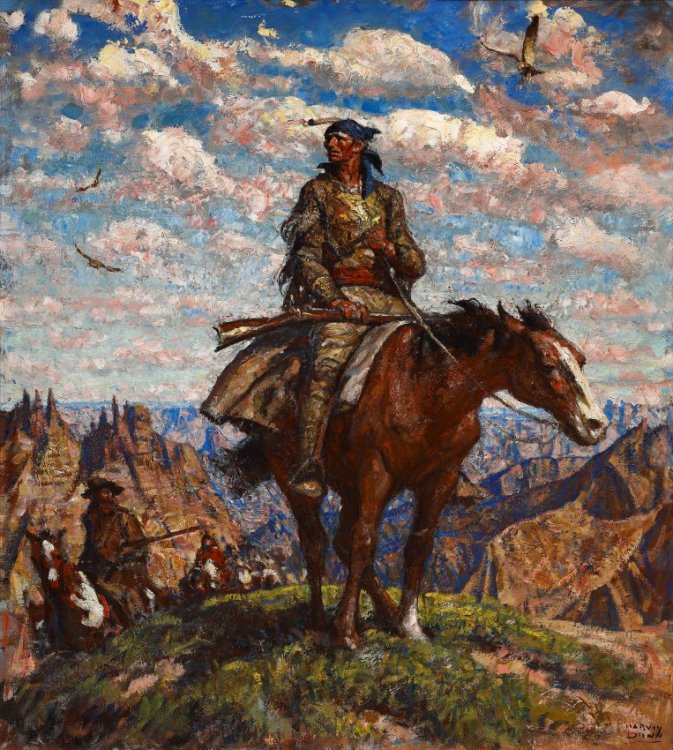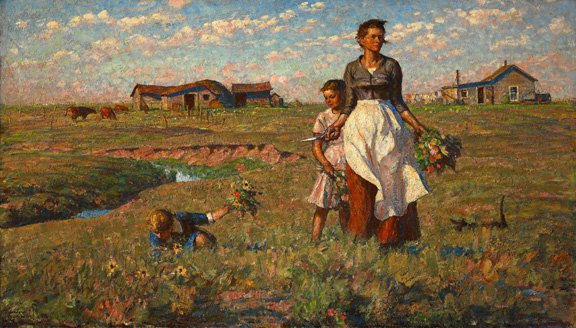Drawn from the collection of the South Dakota Art Museum, "Harvey Dunn: Decades" shares a chronological selection of four - five works from all five decades of Harvey Dunn’s career. Moving clockwise around the gallery, the exhibition starts with an early drawing from 1901 - 1902 created during Dunn’s time as a student at South Dakota Agricultural College (now South Dakota State University). The exhibition ends with one of the latest and most famous works by Dunn from 1950, "The Prairie is My Garden." The exhibition includes illustrations, war works, prairie paintings, landscapes and sketches. It gives a glimpse of the evolution of Dunn’s work across time and the range and consistency of his practice.
Dunn’s work was heavily influenced by his studies under the father of American illustration, Howard Pyle. Pyle taught his students that capturing the spirit of their subjects was more important than visual depiction. He was adept at working across styles to suit the human drama of the stories he illustrated and taught his students to do the same. He used elements from a broad range of late 19th-century art movements for his illustrations, but his application of paint was more consistent. Rooted in academic traditions, Pyle used thinner layers of paint with more subdued brushwork that emphasized the clarity of scenes over the visibility of the artist’s hand. Dunn’s earliest works in illustration echo Pyle’s techniques most directly, with thin layers of paint and subdued brushwork.
Dunn’s early illustrations also mirror the imperatives of the publishing industry. Color printing in the early 20th century was expensive and low quality so black-and-white printing was often preferred. Advances in two- and three-color printing processes came in 1910 that allowed for a less expensive and more widespread use of “spot colors.” Dunn’s early illustrations leading up to the 1920s reflect the needs of the publishing industry in their use of mostly neutral color palettes, popped on occasion with a small number of 1 – 2 highlight colors.
Commercial products became more colorful in the 1920s. Spurred by a need to represent more colorful products in advertising, the publishing industry developed higher quality and less expensive four-color printing methods. Dunn’s work from the 1920s-on shows growing exploitation of the color, texture, and expressiveness of paint itself—features of paintings that higher quality reproductions could now capture better. He used a wider range of colors, applied more thickly and expressively with larger brushes and palette knives. The use of a rich, full range of colors and thick, expressive paint-handling is most obvious in many of Dunn’s prairie paintings. These works, created by Dunn for his own enjoyment often later in life, show his love of the expressive richness he could achieve with the move towards such a painterly manner.
It’s important to note that Dunn’s practice was additive, though, not subtractive. Like his teacher, he didn’t embrace a single style, movement, or way of painting to the exclusion of others at any point but was exploring and learning throughout his career. As he evolved, new tools were simply added to his ever-expanding toolbox. They were always at his fingertips; nothing discovered was left behind. Even after embracing the expressive potential of color and texture, he would return to thinner paint, subdued brushwork, or more neutral color palettes when they suited his expressions best.
What is most consistent from the earliest to latest works by Dunn is the strength and vigor of his hand, his dramatic activation of the entire picture plane, and the conviction of his artistic choices. There is no uncertainty in Dunn’s works. Nothing is overlooked. Even works that are soft or sparse in appearance are strong and activated across the entire picture plane. He practiced what he preached to his students: that nothing should be “perfunctory,” routine, or thoughtless. Choices and marks—great and small—should be considered, engaged, intentional and confident.
Learn more about Harvey Dunn and the Harvey Dunn Collection
Comments
We really value visitor comments about South Dakota Art Museum exhibitions and your experience at the museum or here on our website. Please take a moment to send us your comments and let us know if we can share them here. We also appreciate visitor reviews on Google, Tripadvisor, Facebook and other social sites!


